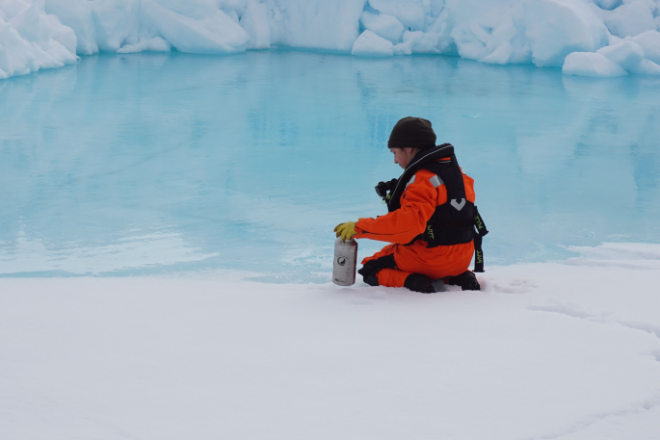Amid global calls to reduce plastic production, new research shows high amounts of plastic in Arctic Sea ice and sediment.
Te Whare Wānanga o Waitaha University of Canterbury scientist Dr Deonie Allen is part of the international research team which found Arctic algae Melosira arctica, has 10 times the concentration of plastic particles than surrounding seawater, potentially threatening sea life and exposing the people who rely on marine food in the region to plastics.
The algae flourish under the sea ice in spring and summer. They then die and drop in clumps kilometres to the sea floor, carrying plastic particles with them.
The concentration of plastic particles at the base of the food web is a threat to creatures that feed on the algae at the sea surface as well as bottom-dwelling animals in the deep sea.
The algae grow rapidly under the sea ice during spring and summer and forms metre-long cell chains there. When the cells die and the ice melts, they stick together to form clumps that can sink to the bottom of the deep sea within a single day.
The surprising result was that the clumps of algae contained an average of 31,000 ± 19,000 microplastic particles per cubic metre – about ten times the concentration of surrounding water.
The ice algae are an important food source for many deep-sea dwellers but are also an important food source at the sea surface, which could explain why microplastics were particularly widespread among ice-associated zooplankton organisms, as an earlier study with AWI participation shows.
The team hopes international co-operation will reduce plastic production.
Credit: sunlive.co.nz



























































